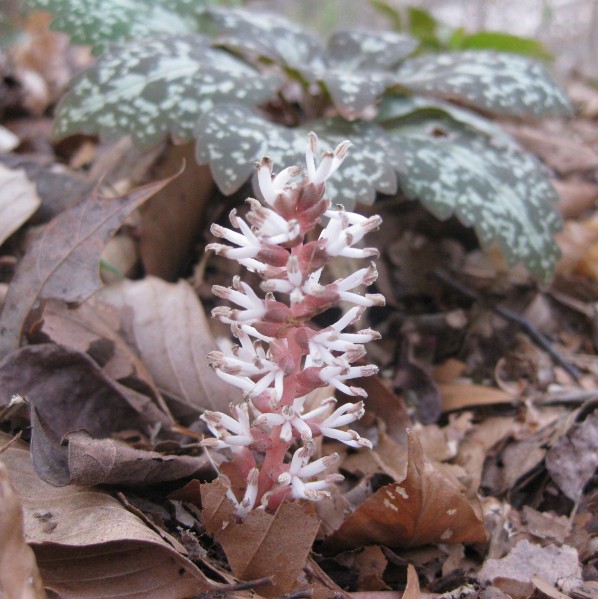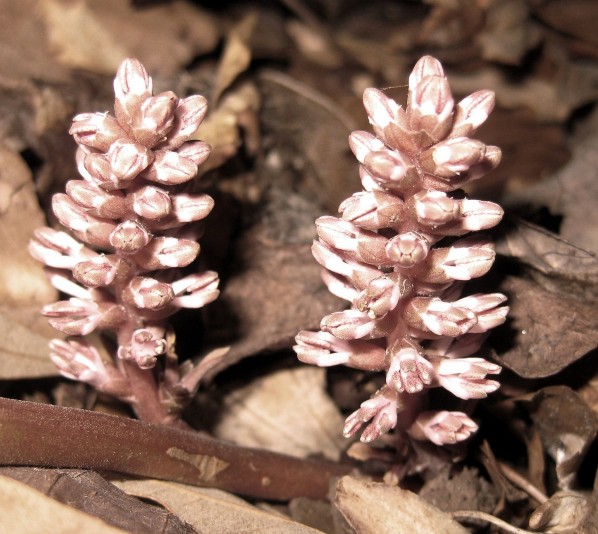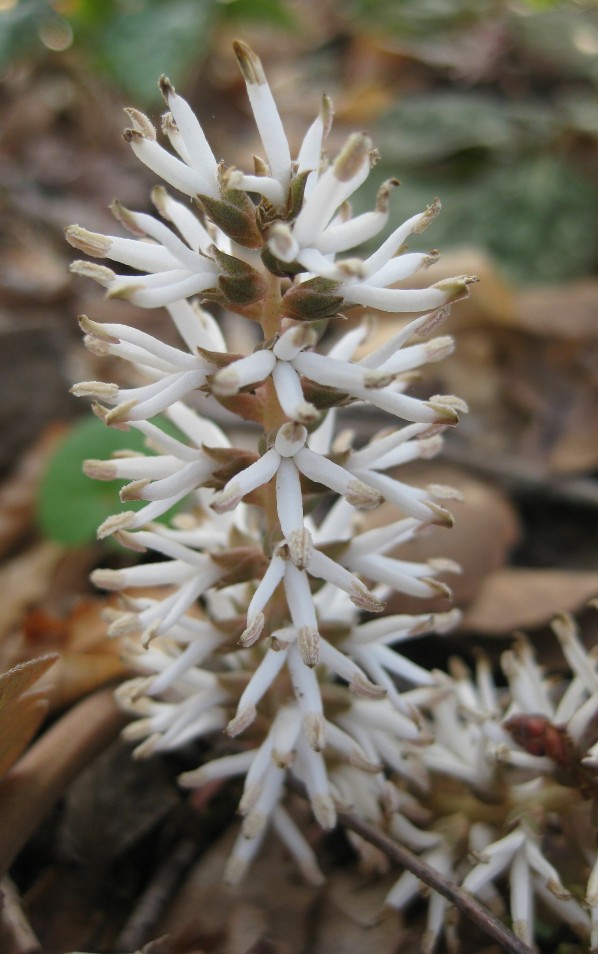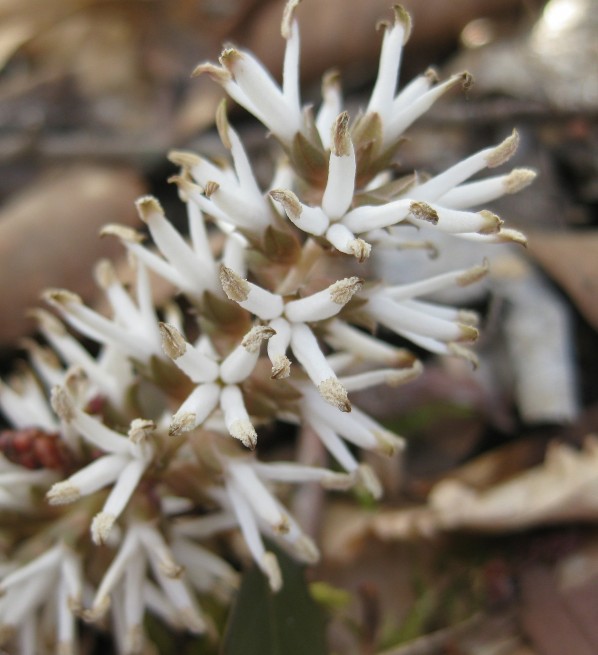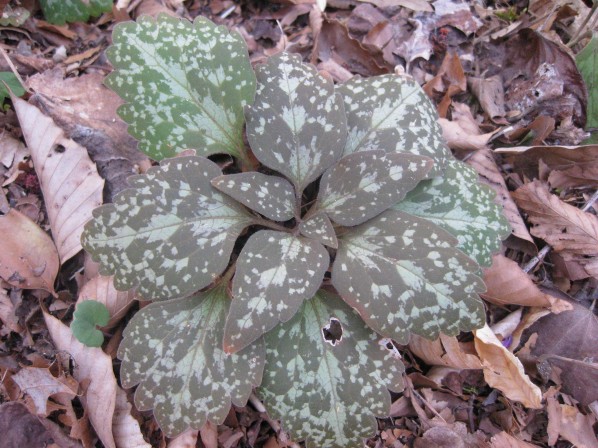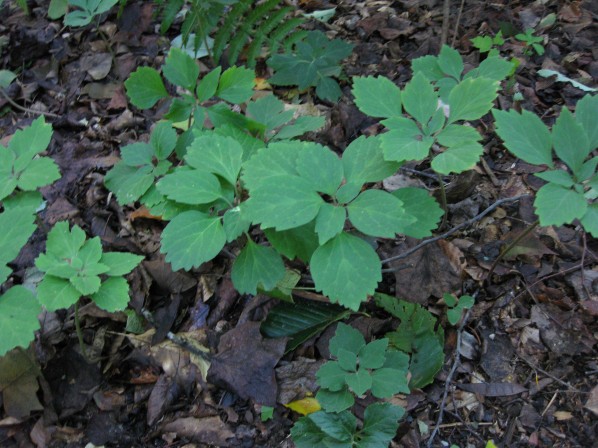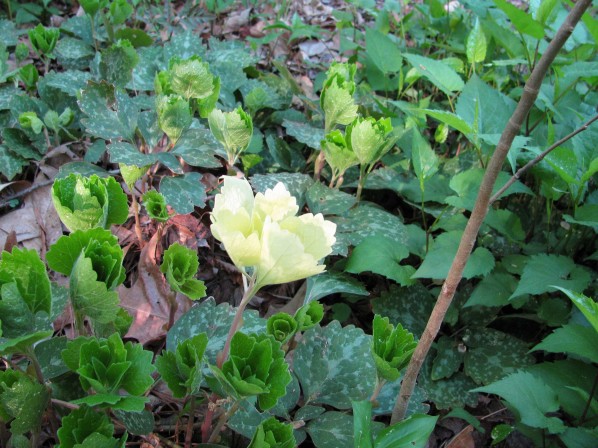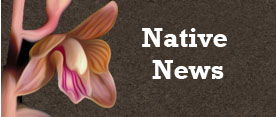NC Native Plant Society:
Plant Details
Pachysandra procumbens
Allegheny Spurge
Scientific Name: |
Pachysandra procumbens |
|---|---|
Genus: |
Pachysandra |
Species Epithet: |
procumbens |
Common Name: |
Allegheny Spurge |
Plant Type |
Herb/Wildflower |
Life Cycle |
Perennial |
Plant Family |
Buxaceae (Boxwood Family) |
Native/Alien: |
NC Native |
Size: |
0-1 ft. |
Bloom Color(s): |
White, Pink |
Light: |
Part Shade - 2 to 6 hours of sun per day, Less than 2 hours of sun per day |
Soil Moisture: |
Moist |
Bloom Time: |
March, April |
Growing Area: |
Piedmont |
Habitat Description: |
Moist rich woods…The only locations for this species in NC are in Polk County, NC, which has other notable disjunctions of species which normally occur west of the Blue Ridge (Weakley 2015). Rare in NC Piedmont. |
Leaf Arrangement: |
Alternate |
Leaf Retention: |
Evergreen |
Leaf Type: |
Leaves veined, not needle-like or scale-like |
Leaf Form: |
Simple |
Life Cycle: |
Perennial |
Wildlife Value: |
Has some wildlife value |
Landscape Value: |
Suitable for home landscapes |
State Rank: |
S1: Critically imperiled (*Key) |
Global Rank: |
G4 - Apparently Secure, G5 - Secure (*Key) |
State Status: |
E: Endangered (*Key) |
Notes: |
"A lovely, well adapted, low groundcover for the Southeast woodland landscape or shade garden." Ladybird Johnson Wildflower Center |
|
Old Leaves & New Bloom Tom Harville |
|
|
Buds Tom Harville |
|
|
Blooms Tom Harville |
|
|
Blooms Close Up Tom Harville |
|
|
Leaves Early Spring
Tom Harville Note that the mottling develops over the winter. |
|
|
Leaves, Early Fall Tom Harville |
|
|
New Leaves Pete Schubert Note the one whitish leaf. There's no obvious explanation but we will watch it in years to come. |
|
Links: |
|
back to top
go to plant details search
go to plant images search
go to gallery home
back to Initial p Gallery
back to orchids
back to Carnivorous Plants
back to Trilliums

